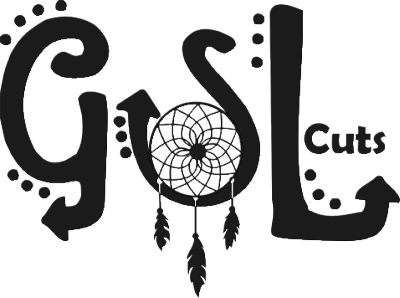First off, glue the two center panels together and then into the slots of the base. Allow this to set up for a bit.
I knew I wanted to use some type of fastener to attach the lazy susan base to the diorama, so I marked the holes with pencil and punched them with a 1/8" Crop-A-Dile. Heavy duty glue like E-6000 will also work.
I've measured out the paper to put in each window - about 6 1/8" x 7", with a score down the center. Spread glue or Mod Podge and use a straight edge to get full coverage. Adhere the paper carefully - I started on one side and moved through to the center and the other side, using that straight edge in the center to make sure it doesn't bubble or stick too soon.
Next I measured and cut paper for the underside of the top piece, leaving the the tabs paper-free. Adhere with glue and set aside.
Measure out the four outside corner pieces - if you want a piece to wrap on each corner, cut it to 1 1/16" x 7" and score down the center. The extra smidge over 1" makes up for the corner. It doesn't have to be exactly 1/16", just make it slightly larger than an inch. I also cut four 10 1/16" x 1/2" strips for the top and bottom. Two for the top and two for the bottom. Set all of these pieces aside.
Next I cut triangles for the inside bottom. Basically, just stick a corner of a scrap paper into the space and mark the front edge with a pencil, leaving the tabs free of paper. You can see this best on the right side in the photo below. All the bottom triangles have been added in this photo.
Before gluing the window frames on, I did a dry run (no glue) to match sides to top, and numbered everything in pencil.
Take the top off and start gluing in the window frames. Don't glue the top yet - having the opening can be helpful when adding to the scenes.
All four sides are on and the glue is dry. I've also attached the lazy susan to the diorama using Tim Holtz knobs. I used these for two reasons - I knew some kind of dimensional material would go on the bottom to hide the knob, and I have so many and rarely use them. Otherwise, brads or heavy-duty glue would work.
In this photo you get a better view of the previously cut corner and top/bottom wraps. Don't adhere them yet, though.
Next I started filling in the windows. I usually keep the extra bits from my GSL Cuts pieces. I think these long strips were between fence posts, but I'm not sure. Here they are handy for helping create dimension on my travel posters.
For "The Good Life" phrase, I pressed the phrase into embossing ink and sprinkled custom blended embossing powders that remind me of sand.
I gesso'd an umbrella from Seaside Decor, then painted it with brown and a brown-red mix. The extra post will be glued to the bottom in order to extend the umbrella in my finished scene. Once dry, glue the pieces together.
Remember the bits I saved? I've used them here as well.
These are leftover bits from something... round. They fit behind the stamps perfectly and already have brown shadowy edges so I don't have to ink them. (I don't like my supporting pieces to be visible, so I ink them.)
At this point I have finished my windows and can finally put the top on. Despite this photo, I suggest you measure your paper and set it aside. Glue the top onto the diorama and add the paper last.
The window frame wraps can go on now. I added the tops and bottoms first, then trimmed the corners of the corner wraps to give a false mitered look.
The finished diorama!
Thanks for your visit today! I hope you can also visit us at the Gypsy Soul Laser Cuts Craft Group on Facebook.
Cheers,
Susan
GSL Cuts Used
Dimensional Diorama #BA10A
The Good Life #C5K
Seaside Decor (beach umbrella) #C40B
Small pieces saved from other GSL Cuts
Other Supplies Used
Graphic 45 "On The Boardwalk" paper
Brown moss (to look like sand)
Thin wood veneer (boardwalk floor)
Shells
Cheese cloth
Stickles glitter glue
Ranger Glossy Accents
Embossing powder ( white and browns mix)


























No comments:
Post a Comment